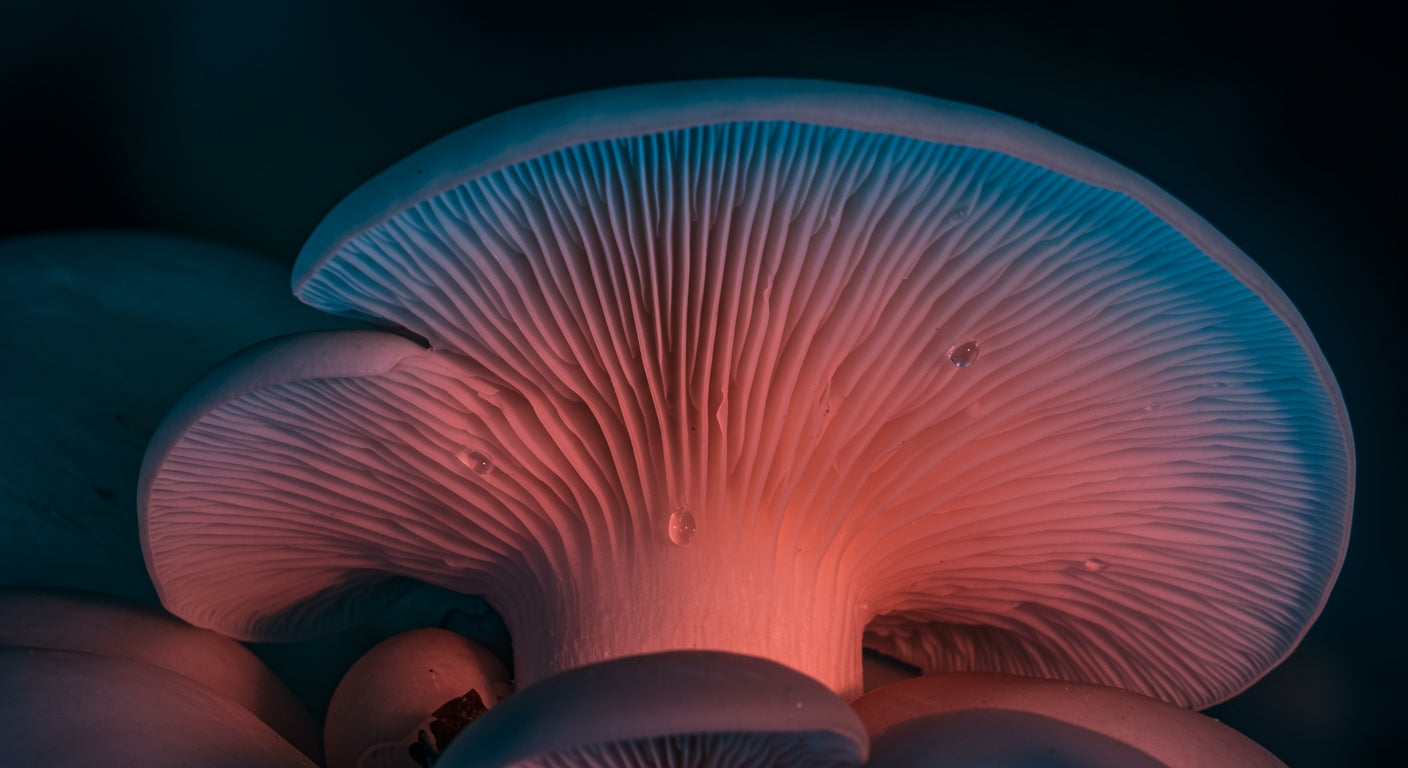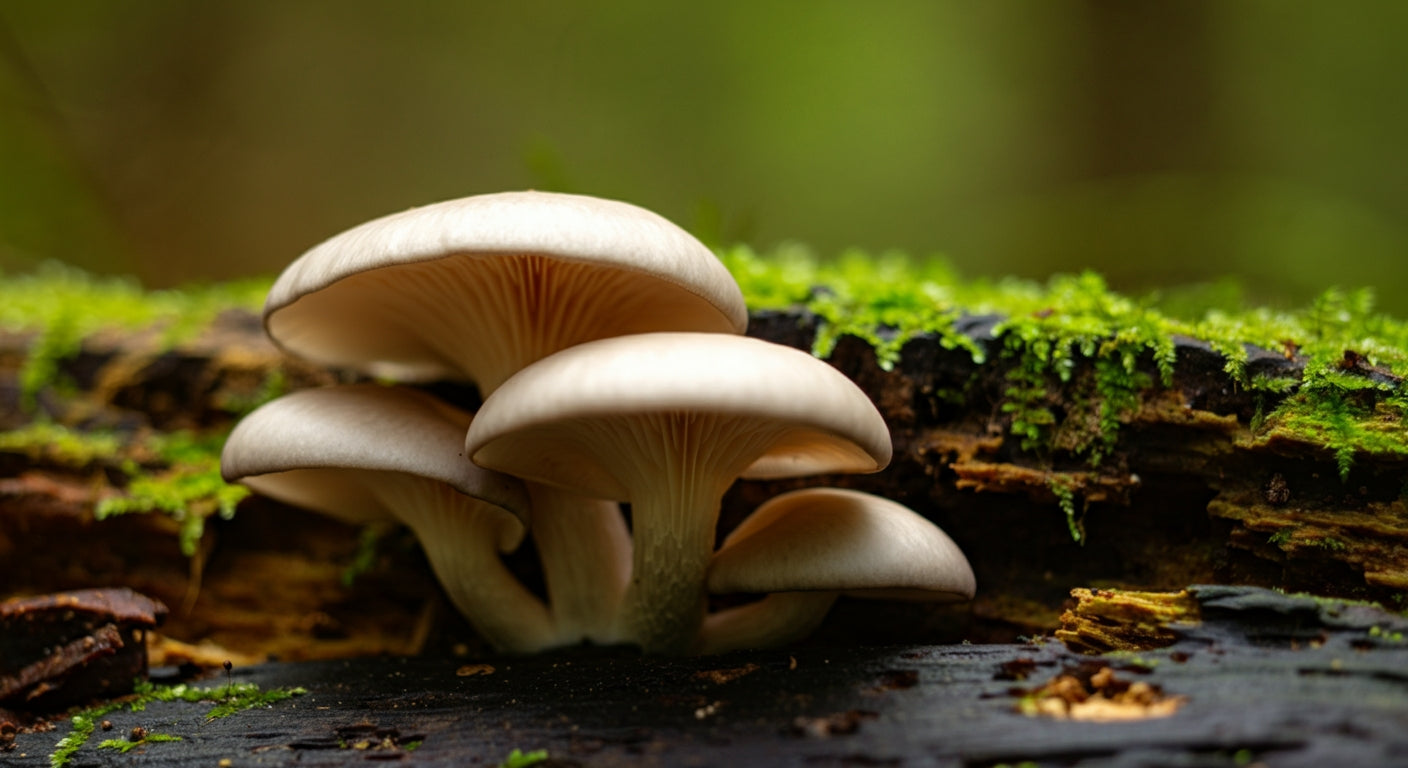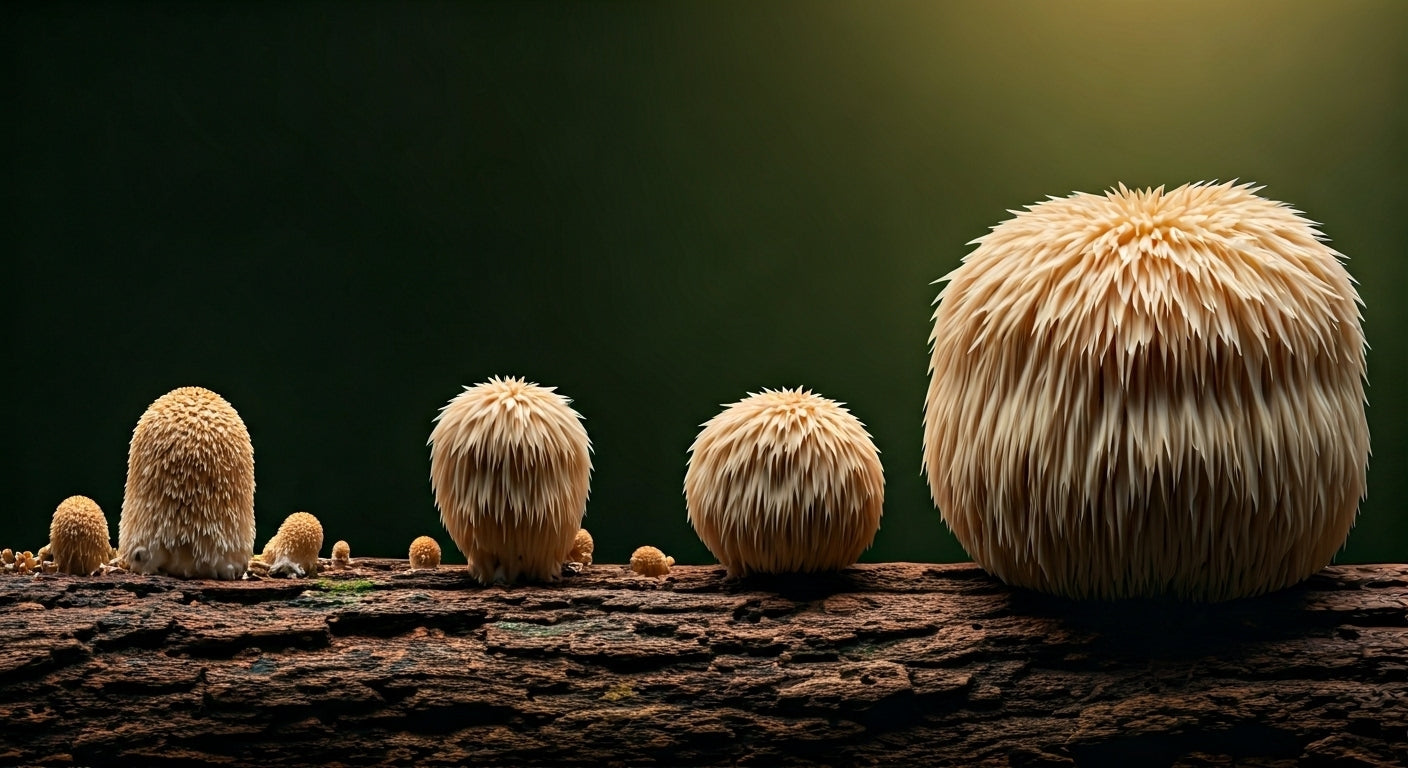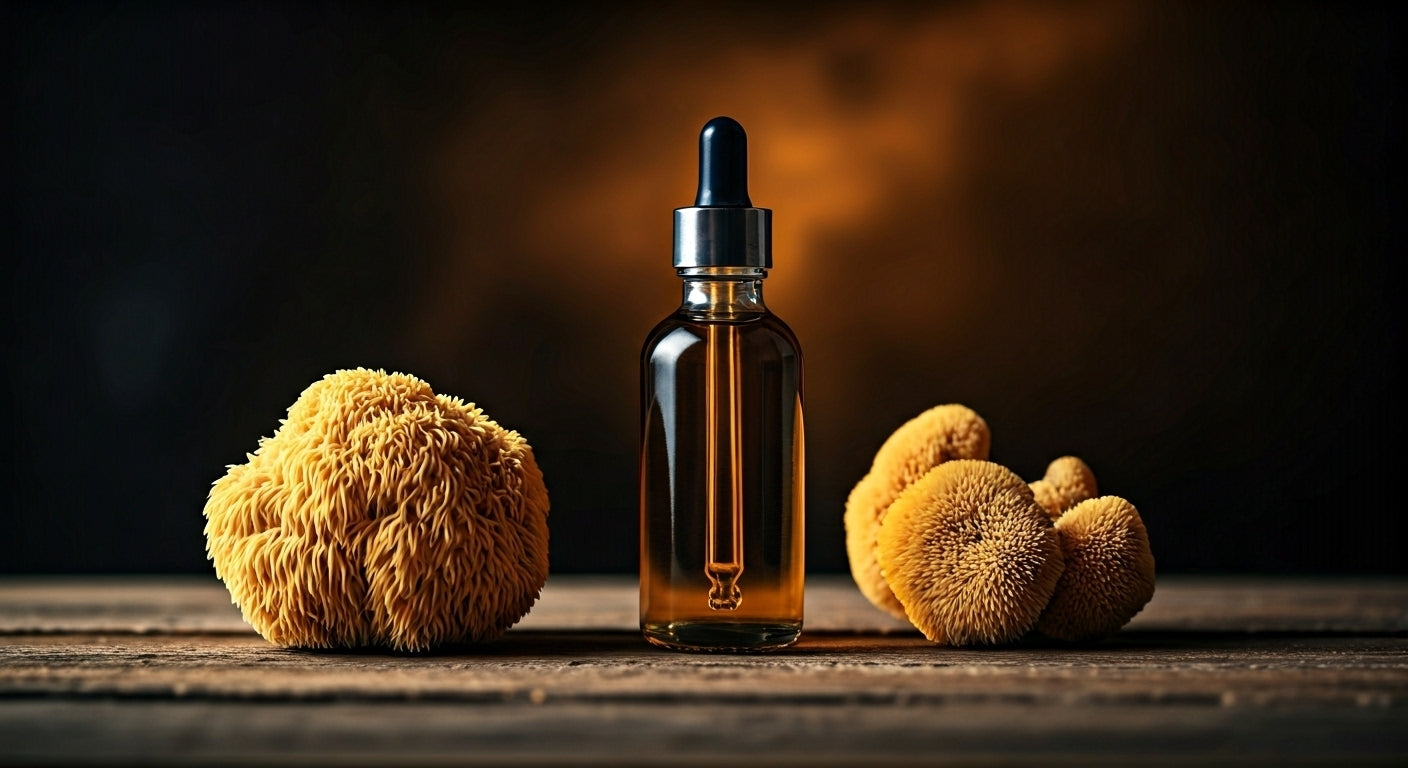Snow oyster mushrooms represent one of nature's most remarkable cold-weather fungi, thriving in conditions that would challenge most other mushroom varieties. These stunning white to pale gray mushrooms, scientifically known as Pleurotus ostreatus var. florida, offer exceptional flavor and impressive nutritional benefits while being surprisingly easy to cultivate at home. Whether you're an experienced mushroom grower or just starting your fungal journey, snow oyster mushrooms provide an excellent opportunity to enjoy fresh, homegrown mushrooms year-round.
Unlike their warmer-weather cousins, snow oyster mushrooms have adapted to flourish in cooler temperatures, making them perfect for winter cultivation and regions with harsh climates. Their robust nature, combined with their delicate appearance and superior taste, has made them increasingly popular among gourmet chefs and home cultivators alike.

Understanding Snow Oyster Mushrooms: Characteristics and Varieties
Snow oyster mushrooms distinguish themselves from regular oyster mushrooms through their exceptional cold tolerance and unique appearance. These fungi typically display pristine white to pale gray coloration with slightly thicker stems than their warm-weather relatives.
Physical Characteristics
Snow oyster mushrooms form beautiful shelf-like clusters that can grow quite large under optimal conditions. Their caps range from 2-8 inches in diameter, featuring a slightly convex shape when young that flattens with age. The gills underneath are white to cream-colored and run down the stem, creating the characteristic decurrent pattern typical of oyster mushrooms.
Growing Conditions
What makes snow oyster mushrooms truly special is their temperature preference. While standard oyster mushrooms prefer temperatures between 55-75°F, snow oyster mushrooms thrive in cooler conditions ranging from 35-55°F. This adaptation allows them to fruit successfully when other varieties struggle or go dormant.
Flavor Profile
Snow oyster mushrooms offer a more delicate, subtle flavor compared to their warm-weather counterparts. They possess a mild, slightly sweet taste with hints of anise or seafood-like notes. The texture is tender yet meaty, making them excellent for various culinary applications from simple sautés to complex gourmet dishes.
Nutritional Superiority
The cold-growing conditions that snow oyster mushrooms prefer actually enhance their nutritional profile. These mushrooms develop higher concentrations of certain compounds, including beta-glucans and ergothioneine, which provide enhanced immune support and antioxidant benefits. Their nutritional density makes them an excellent addition to winter diets when fresh produce options are limited.
Growing Snow Oyster Mushrooms: Complete Cultivation Guide
Growing snow oyster mushrooms at home is surprisingly straightforward, especially with the right equipment and knowledge. These hardy fungi adapt well to various growing methods, making them perfect for beginners and experienced cultivators alike.
Indoor Growing Methods
Using Grow Kits
The easiest way to start growing snow oyster mushrooms is with a quality mushroom grow kit. These kits provide everything needed for successful cultivation, including pre-inoculated substrate blocks and detailed instructions. For snow oyster mushrooms, look for kits specifically designed for cold-weather varieties or those with temperature control features.
DIY Substrate Preparation
For more advanced growers, creating your own substrate offers greater control and cost savings. Snow oyster mushrooms grow excellently on:
-
Pasteurized straw (wheat, barley, or rice straw)
-
Coffee grounds mixed with cardboard or paper
-
Hardwood sawdust from oak, maple, or beech
-
Cardboard layered with spawn
Optimal Growing Conditions
Temperature Management
Snow oyster mushrooms require consistently cool temperatures for optimal growth. Maintain temperatures between 35-55°F during the fruiting phase. This can be achieved through:
-
Refrigerated growing chambers for precise control
-
Unheated basements or garages in winter
-
Outdoor cold frames in appropriate climates
-
Dedicated growing rooms with temperature regulation
Humidity Requirements
Like all oyster mushrooms, snow varieties need high humidity levels (80-95%) for proper development. Advanced growing systems with humidity controls make maintaining these conditions much easier and more consistent.
Light and Air Circulation
Snow oyster mushrooms require minimal light – indirect sunlight or fluorescent lighting for 12 hours daily is sufficient. Proper air circulation prevents contamination while ensuring healthy mushroom development.
Harvesting and Storage
When to Harvest
Snow oyster mushrooms are ready for harvest when the caps begin to flatten and the edges start to curl upward. This typically occurs 7-14 days after the first pins appear. Harvest the entire cluster by cutting at the base with a clean knife.
Proper Storage Techniques
Fresh snow oyster mushrooms can be stored in the refrigerator for 7-10 days in a paper bag or breathable container. For longer storage, they can be:
-
Dehydrated for shelf-stable preservation
-
Frozen after blanching for cooking use
-
Pickled for extended refrigerator storage
-
Cooked and frozen in prepared dishes
Health Benefits and Culinary Uses
Snow oyster mushrooms offer exceptional nutritional value and unique culinary applications that make them valuable additions to any diet.
Nutritional Benefits
The cold-growing conditions that snow oyster mushrooms thrive in actually enhance their nutritional profile:
-
Higher beta-glucan content for enhanced immune support
-
Increased ergothioneine levels providing superior antioxidant protection
-
Enhanced B-vitamin concentrations supporting energy metabolism
-
Improved mineral density including potassium, phosphorus, and zinc
Culinary Applications
Snow oyster mushrooms' delicate flavor and tender texture make them incredibly versatile in the kitchen:
Simple Preparation Methods
-
Sautéed with garlic and herbs as a side dish
-
Grilled with a light seasoning for smoky flavor
-
Roasted in the oven with vegetables
-
Added fresh to salads for texture and nutrition
Gourmet Applications
-
Mushroom risottos showcasing their delicate flavor
-
Cream-based soups highlighting their tender texture
-
Pasta dishes with light, complementary sauces
-
Asian stir-fries where their subtle taste shines
Troubleshooting Common Growing Issues
Even with their hardy nature, snow oyster mushrooms can encounter growing challenges. Understanding these issues helps ensure successful cultivation.
Temperature-Related Problems
-
Too warm: Mushrooms may develop long, spindly stems
-
Too cold: Slow growth or complete stalling
-
Temperature fluctuations: Irregular fruiting patterns
Humidity Issues
-
Low humidity: Mushrooms dry out and crack
-
Excessive humidity: Increased risk of bacterial contamination
-
Poor air circulation: Mold growth and poor mushroom development
Contamination Prevention
-
Maintain sterile conditions during inoculation
-
Use pasteurized substrates to eliminate competing organisms
-
Monitor growing environment for signs of contamination
-
Harvest promptly to prevent over-ripening and decay
Frequently Asked Questions
What makes snow oyster mushrooms different from regular oyster mushrooms?
Snow oyster mushrooms are a cold-tolerant variety of oyster mushrooms that thrive in temperatures between 35-55°F, significantly cooler than regular oyster mushrooms. They have a more delicate flavor, paler coloration, and enhanced nutritional profile due to their cold-growing conditions.
Can I grow snow oyster mushrooms year-round?
Yes, snow oyster mushrooms can be grown year-round with proper temperature control. During warmer months, you'll need refrigerated growing chambers or climate-controlled environments to maintain the cool temperatures they require for optimal growth.
How long does it take to grow snow oyster mushrooms from start to harvest?
Snow oyster mushrooms typically take 10-21 days from inoculation to harvest, depending on growing conditions. The cooler temperatures they prefer can slow growth slightly compared to warm-weather varieties, but the enhanced flavor and nutritional benefits make the wait worthwhile.
Are snow oyster mushrooms safe for beginners to grow?
Absolutely! Snow oyster mushrooms are excellent for beginners due to their forgiving nature and resistance to contamination. Starting with a quality grow kit designed for cold-weather varieties provides the best success rate for new cultivators.
What's the best substrate for growing snow oyster mushrooms at home?
Pasteurized straw, coffee grounds mixed with cardboard, and hardwood sawdust all work excellently for snow oyster mushrooms. For beginners, pre-prepared substrate blocks from reputable suppliers offer the most consistent results with minimal preparation required.
Summary
Snow oyster mushrooms represent an exceptional opportunity for home cultivators to enjoy fresh, gourmet mushrooms year-round. Their cold-weather adaptation, enhanced nutritional profile, and delicate flavor make them valuable additions to any growing operation. With proper temperature control and basic growing knowledge, these hardy fungi can provide consistent harvests even in challenging conditions. Whether using commercial grow kits or creating DIY setups, snow oyster mushrooms offer rewarding cultivation experiences with delicious, nutritious results.
Start Growing Snow Oyster Mushrooms Today
Ready to experience the unique satisfaction of growing your own snow oyster mushrooms? These remarkable cold-weather fungi offer exceptional flavor, outstanding nutrition, and surprisingly easy cultivation – perfect for both beginners and experienced growers.
Don't let another season pass without enjoying fresh, homegrown mushrooms. Explore our complete selection of mushroom growing equipment designed to provide optimal conditions for snow oyster mushroom cultivation. Our advanced systems take the guesswork out of maintaining proper temperature and humidity levels, ensuring your success from the very first harvest.
Learn more about oyster mushroom identification and varieties to enhance your growing knowledge, and discover why these cold-weather champions are becoming the preferred choice for discerning mushroom enthusiasts. Your journey into premium mushroom cultivation starts with the right tools and knowledge – let us help you grow the freshest, most delicious snow oyster mushrooms possible.













Share:
Edible Mushrooms in California: Your Complete Guide to Foraging and Growing Nature's Treasures
Agar Plates for Mycology: The Essential Guide to Advanced Mushroom Cultivation